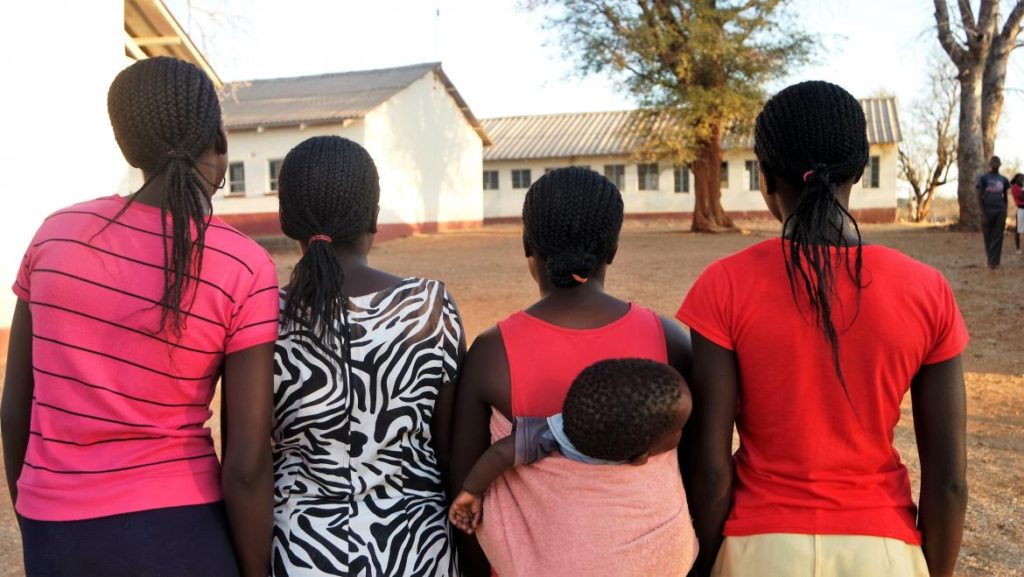Continued Learning for Girls and Women Affected by Teenage Pregnancies and Early Child Marriages

Education is one of the most powerful tools that can be used to transform the world. According to the World Bank, education is fundamental to world development and growth. Development achievements such as efficient public administration, private sector growth, agricultural innovations, and health dwell on the potential of the human mind. In order to achieve all these developments and more, there is a need to unleash the potential of the human mind, and there is no better tool that could be used than education.
Globally, governments, with help from various stakeholders, have made tremendous efforts to promote education enrollment by ensuring every student stays in school and gets educated. However, continued school dropout rates are hindering the advancements being made. UNESCO (2020) reported that more than 64 million primary school students dropped out of school in 2020. There is even a gender gap, with a higher percentage of female student dropouts. The possible consequences of this gives rise to concerns about how the girl child would be left behind in this effort to promote education. Findings have shown that teenage pregnancies and early marriages are significant factors contributing to this high dropout rate among females.
For instance, WHO (2023) reported that globally, the adolescent birth rate for girls aged between 10 and 14 years old in 2022 was estimated at 1.5 per 1000 women, with higher rates in sub-Saharan Africa. Malawi alone has reported 29% of teenage pregnancies, one of the highest in the sub-region. Usually, schoolgirls who become pregnant have fewer opportunities to complete their education after childbirth. But in order to resolve this, Malawi introduced the re-admission policy in 1993, which was revised in 2016. This policy was implemented to ensure that pregnant girls can resume their education after giving birth.
Similarly, child marriages have been a setback in ensuring students stay in school, as they have led to high school dropouts in many countries, including Malawi. Many cases of child marriage persist despite the fight by various stakeholders to put them to an end. About 46% of girls get married before the age of 18, and 9% before the age of 15. These child marriages are often driven by cultural norms and poverty. For instance, in some cultures, a girl is thought to be eligible for marriage when she reaches a specific age, which is frequently signaled by the start of her menstruation. Unfortunately, some young girls in low-income families are forced into marriage because of the material benefits that their parents gain by marrying them off.
The Ministry of Gender, Children, Disability, and Social Welfare launched a National strategy to end child marriages in Malawi by 20% by the year 2023. Despite these plans, the onset of the coronavirus pandemic in 2020 hindered progress in ending child marriages in countries with already existing high rates of child marriages. School closures during the pandemic period led to a lot of young girls getting married, and a majority never returned to school after schools were reopened.
Nevertheless, despite ongoing efforts by various stakeholders to address teenage pregnancies and child marriages and facilitate the return of girls and women to school, it is important to also consider ‘continued learning’ as a tool to help address these barriers. In addition to the efforts being made, utilizing continued learning strategies like distance learning can effectively contribute to overcoming the challenges posed by teenage pregnancies and early marriages. Ensuring the accessibility of flexible learning strategies like distance learning to girls and women affected by these circumstances can be a means of achieving inclusive education for all. These approaches would provide a chance for everyone to continue with education regardless of circumstances that may have disrupted it, like teen pregnancies. It would also serve as a learning aid for women and girls preparing to return to school.
In order to reach students who are physically distanced from regular classrooms, distance learning makes use of technology. Girls and women would have the option of remotely accessing lessons and homework through online resources, audio conferencing, and educational apps. As a result of this learning style’s flexibility with their schedules, they can pursue education while taking care of their pregnancies and newborn babies. It is high time countries’ education systems incorporate distance learning to ensure continued learning for girls and women affected by teenage pregnancies and early marriages.